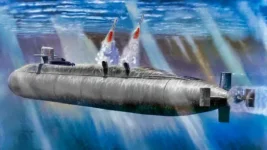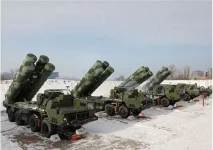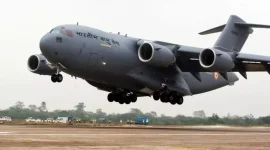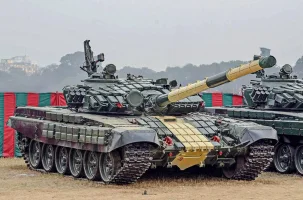- Views: 1K
- Replies: 10
The Indian government is reportedly evaluating the acquisition of one to two additional squadrons of the Russian-made S-400 'Triumf' air defence system.
This potential expansion comes as India continues to strengthen its air defence capabilities along its borders with China and Pakistan, while simultaneously pushing forward with its ambitious indigenous missile program, 'Project Kusha'.
This strategic consideration builds upon a foundational 2018 agreement with Russia, valued at $5.43 billion, for the purchase of five S-400 squadrons.
Known in Indian service as the “Sudarshan Chakra,” the system is a highly advanced, mobile surface-to-air missile (SAM) platform developed by Russia’s Almaz-Antey.
It is designed to detect and neutralise a wide array of aerial threats—including fighter jets, drones, cruise missiles, and ballistic missiles—at an operational range of up to 400 kilometres and altitudes reaching 30 kilometres.
Currently, three of the five contracted S-400 squadrons have been delivered and are operationally deployed. These units are strategically positioned to guard critical areas, with one securing the vital Siliguri Corridor near the China border, another in the Punjab region to cover the union territory of Jammu and Kashmir, and a third deployed along the western frontier.
However, the delivery schedule for the remaining two squadrons has been adjusted due to geopolitical factors. Originally expected by 2024, the completion of the order is now anticipated by 2026, a delay attributed to supply chain pressures on Russia's defence industry following the conflict in Ukraine.
High-level discussions, including those during Prime Minister Narendra Modi’s visit to Moscow in July 2024, have reportedly focused on accelerating this timeline.
The S-400 system is a cornerstone of India's multi-layered air defence network and is fully integrated with the Indian Air Force's (IAF) Integrated Air Command and Control System (IACCS). This network allows for centralised command and comprehensive situational awareness.
The S-400's technology enables it to track as many as 100 aerial targets and engage up to 36 of them simultaneously, providing a formidable defence posture against potential adversaries.
Its presence serves as a significant deterrent, particularly when compared to the Chinese-made HQ-9 systems used by Pakistan, which have a shorter range.
In parallel with these foreign acquisitions, India is heavily invested in developing its own long-range surface-to-air missile (LR-SAM) system under 'Project Kusha'.
Spearheaded by the Defence Research and Development Organisation (DRDO), this project aims to create a system with capabilities that could eventually rival next-generation platforms like Russia's S-500 'Prometheus'.
This initiative is a central part of the government's 'Aatmanirbhar Bharat' (Self-Reliant India) policy, which seeks to enhance domestic defence production and reduce dependency on foreign military hardware.
In May 2022, the Cabinet Committee on Security granted the Acceptance of Necessity (AoN) for the procurement of five squadrons of the Project Kusha system for the IAF, at an estimated cost of ₹21,700 crore ($2.6 billion). The long-term plan reportedly includes inducting a total of ten squadrons.
Despite the progress, both paths face distinct challenges.
The reliance on the S-400 has been complicated by international pressures, including the past threat of U.S. sanctions under the Countering America's Adversaries Through Sanctions Act (CAATSA), which India has navigated through diplomatic channels.
Meanwhile, Project Kusha must overcome significant technical hurdles, including the development of advanced radar systems and reliable interceptor vehicles, to meet its ambitious deployment timeline of 2028-2029.





